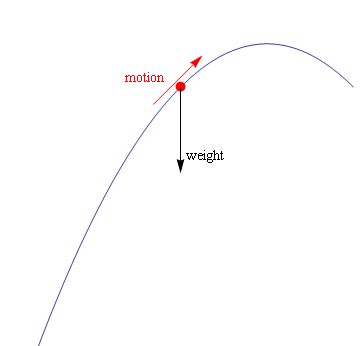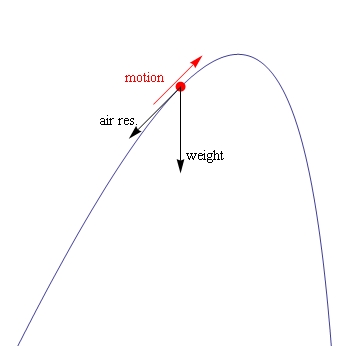
A free body is anything that can be thought of as moving as a single unit, and a free body diagram is a pictorial representation of the forces acting on a free body.
The simplest kinds of free body diagram are those in which the body can be thought of as a particle. But even these aren't always completely straightforward, because it's not always easy to think in purely Newtonian terms about the forces that are actually present (as opposed to the way the particle may be moving).
For example, if a particle is moving under gravity with no air resistance, then wherever it is on its trajectory, it is subject to only one force: its weight. This is shown in black in Figure 1.

Figure 1: A particle moving under gravity is subject only to its weight.
If there is air resistance, then there are only two forces: weight and air resistance. The direction of the air resistance is opposite to that of the motion.

Figure 2: A particle moving under gravity in a resistive medium.
Other kinds of force include the reaction between two surfaces (which acts at right angles to their plane of contact); the friction between two surfaces (which acts parallel to their plane of contact, opposing any tendency to slip); the tension in a string (which acts along it).